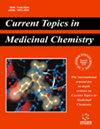Neuroprotective Role of Phytoconstituents-based Nanoemulsion for the Treatment of Alzheimer’s Disease
IF 2.9
4区 医学
Q3 CHEMISTRY, MEDICINAL
Current topics in medicinal chemistry
Pub Date : 2024-04-27
DOI:10.2174/0115680266296001240327090111
引用次数: 0
Abstract
: Alzheimer's disease (AD) is the most prevalent form of neurodegenerative disorder (ND), affecting more than 44 million individuals globally as of 2023. It is characterized by cognitive dysfunction and an inability to perform daily activities. The progression of AD is associated with the accumulation of amyloid beta (Aβ), the formation of neurofibrillary tangles (NFT), increased oxidative stress, neuroinflammation, mitochondrial dysfunction, and endoplasmic reticulum stress. Presently, various phytomedicines and their bioactive compounds have been identified for their neuroprotective effects in reducing oxidative stress, alleviating neuroinflammation, and mitigating the accumulation of Aβ and acetylcholinesterase enzymes in the hippocampus and cerebral cortex regions of the brain. However, despite demonstrating promising anti-Alzheimer's effects, the clinical utilization of phytoconstituents remains limited in scope. The key factor contributing to this limitation is the challenges inherent in traditional drug delivery systems, which impede their effectiveness and efficiency. These difficulties encompass insufficient drug targeting, restricted drug solubility and stability, brief duration of action, and a lack of control over drug release. Consequently, these constraints result in diminished bioavailability and insufficient permeability across the blood-brain barrier (BBB). In response to these challenges, novel drug delivery systems (NDDS) founded on nanoformulations have emerged as a hopeful strategy to augment the bioavailability and BBB permeability of bioactive compounds with poor solubility. Among these systems, nanoemulsion (NE) have been extensively investigated for their potential in targeting AD. NE offers several advantages, such as ease of preparation, high drug loading, and high stability. Due to their nanosize droplets, NE also improves gut and BBB permeability leading to enhanced permeability of the drug in systemic circulation and the brain. Various studies have reported the testing of NE-based phytoconstituents and their bioactives in different animal species, including transgenic, Wistar, and Sprague-Dawley (SD) rats, as well as mice. However, transgenic mice are commonly employed in AD research to analyze the effects of Aβ. In this review, various aspects such as the neuroprotective role of various phytoconstituents, the challenges associated with conventional drug delivery, and the need for NDDS, particularly NE, are discussed. Various studies involving phytoconstituent-based NE for the treatment of AD are also discussed.基于植物成分的纳米乳液在治疗阿尔茨海默病中的神经保护作用
:阿尔茨海默病(AD)是神经退行性疾病(ND)中最常见的一种,截至 2023 年,全球有 4400 多万人罹患该病。其特征是认知功能障碍和无法进行日常活动。注意力缺失症的发展与淀粉样 beta(Aβ)的积累、神经纤维缠结(NFT)的形成、氧化应激增加、神经炎症、线粒体功能障碍和内质网应激有关。目前,已发现多种植物药及其生物活性化合物具有神经保护作用,可降低氧化应激、缓解神经炎症、减轻大脑海马区和大脑皮层中 Aβ 和乙酰胆碱酯酶的积累。然而,尽管植物成分具有良好的抗阿尔茨海默氏症效果,但其临床应用范围仍然有限。造成这种限制的关键因素是传统给药系统所固有的挑战,这些挑战阻碍了其有效性和效率。这些困难包括药物靶向性不足、药物溶解度和稳定性受限、作用时间短暂以及缺乏对药物释放的控制。因此,这些制约因素导致生物利用度降低,通过血脑屏障(BBB)的渗透性不足。为了应对这些挑战,以纳米制剂为基础的新型给药系统(NDDS)应运而生,成为提高溶解性差的生物活性化合物的生物利用度和血脑屏障渗透性的一种有希望的策略。在这些系统中,纳米乳剂(NE)因其在靶向抗逆转录病毒(AD)方面的潜力而受到广泛研究。纳米乳液具有制备简便、载药量高和稳定性强等优点。由于其为纳米级液滴,NE 还能改善肠道和 BBB 的通透性,从而提高药物在全身循环和大脑中的渗透性。各种研究都报道了在不同动物物种(包括转基因大鼠、Wistar 大鼠、Sprague-Dawley(SD)大鼠和小鼠)中测试 NE 植物成分及其生物活性的情况。然而,在注意力缺失症研究中,通常采用转基因小鼠来分析 Aβ 的影响。本综述讨论了各种植物成分的神经保护作用、与传统给药相关的挑战以及对 NDDS(尤其是 NE)的需求等各个方面。此外,还讨论了涉及基于植物成分的 NE 治疗注意力缺失症的各种研究。
本文章由计算机程序翻译,如有差异,请以英文原文为准。
求助全文
约1分钟内获得全文
求助全文
来源期刊
CiteScore
6.40
自引率
2.90%
发文量
186
审稿时长
3-8 weeks
期刊介绍:
Current Topics in Medicinal Chemistry is a forum for the review of areas of keen and topical interest to medicinal chemists and others in the allied disciplines. Each issue is solely devoted to a specific topic, containing six to nine reviews, which provide the reader a comprehensive survey of that area. A Guest Editor who is an expert in the topic under review, will assemble each issue. The scope of Current Topics in Medicinal Chemistry will cover all areas of medicinal chemistry, including current developments in rational drug design, synthetic chemistry, bioorganic chemistry, high-throughput screening, combinatorial chemistry, compound diversity measurements, drug absorption, drug distribution, metabolism, new and emerging drug targets, natural products, pharmacogenomics, and structure-activity relationships. Medicinal chemistry is a rapidly maturing discipline. The study of how structure and function are related is absolutely essential to understanding the molecular basis of life. Current Topics in Medicinal Chemistry aims to contribute to the growth of scientific knowledge and insight, and facilitate the discovery and development of new therapeutic agents to treat debilitating human disorders. The journal is essential for every medicinal chemist who wishes to be kept informed and up-to-date with the latest and most important advances.

 求助内容:
求助内容: 应助结果提醒方式:
应助结果提醒方式:


